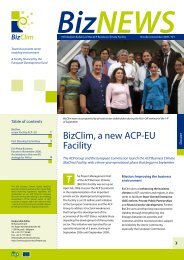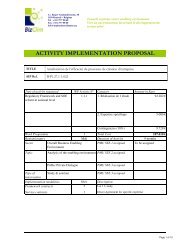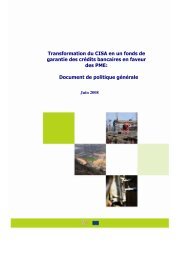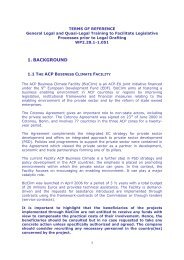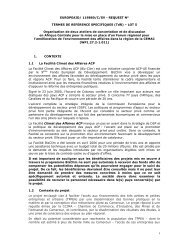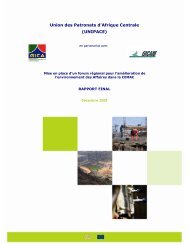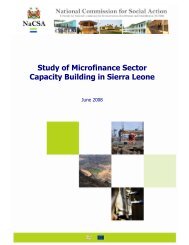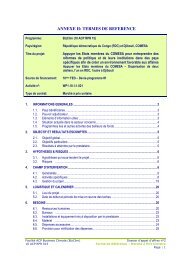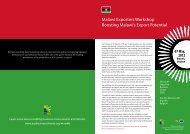(PPP) for Swaziland - ACP Business Climate
(PPP) for Swaziland - ACP Business Climate
(PPP) for Swaziland - ACP Business Climate
Create successful ePaper yourself
Turn your PDF publications into a flip-book with our unique Google optimized e-Paper software.
Design, build, maintain and operate dam +<br />
irrigation system<br />
Risk type Allocation Probability Impact<br />
Design<br />
Flooding<br />
Cracks<br />
Earthquakes<br />
Positioning<br />
Irrigation<br />
Private Low<br />
Medium<br />
Very low<br />
Low<br />
Low<br />
High<br />
Low<br />
High<br />
High<br />
Medium<br />
system design<br />
Construction<br />
Construction<br />
Cost<br />
Private<br />
High<br />
Machines<br />
Expertise<br />
Availability of<br />
material<br />
Quality<br />
Operational<br />
Drought<br />
Management<br />
Demand risk<br />
Private<br />
Shared<br />
(Droughts<br />
occur very<br />
rarely, it would<br />
be unfair to<br />
allocate it only<br />
to the private<br />
sector)<br />
Shared<br />
(The public<br />
sector has to<br />
help in the<br />
promotion /<br />
marketing)<br />
Medium<br />
Low<br />
Low<br />
Low<br />
Medium<br />
Low<br />
Low<br />
Medium<br />
High<br />
Low<br />
High<br />
High<br />
Medium<br />
High<br />
Work Group 3 // Health sector project “Renal Unit”<br />
The Government wishes to build renal units in all major<br />
hospitals but faces the problem that the cost per<br />
patient is very high. The group had to be careful not to<br />
make typical mistakes of economic models. The number<br />
of successfully treated patients has to be defined<br />
more precisely <strong>for</strong> the output specifications as there<br />
might be just less ill people than expected. Also they<br />
had to explain their measurement indices, <strong>for</strong> example<br />
when evaluating the success of training programmes.<br />
Output specifications:<br />
• Number of patients treated per day at international<br />
standards<br />
• Ambiance of the room of international standard<br />
• Temperature, humidity, etc<br />
• Capacity building <strong>for</strong> the key staff (Development of<br />
a capacity building index – we believe that it should<br />
be easy to measure)<br />
Risks<br />
Type Allocation Probability Impact<br />
Design<br />
Design deficiency<br />
risk. failure to meet<br />
structural specifications<br />
Private sector 50 % High<br />
Construction risk<br />
Delay<br />
Latent defects<br />
Management Risk<br />
Staff crisis<br />
Third party liability<br />
Operational<br />
Equipment failure<br />
Quality of reagents<br />
Private<br />
Private<br />
Shared<br />
Shared<br />
Private<br />
Privater<br />
10 %<br />
10 %<br />
60 %<br />
5 %<br />
10 %<br />
5 %<br />
Low<br />
Low<br />
High<br />
Low<br />
Low<br />
Very low<br />
15




